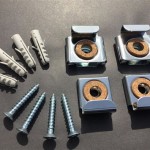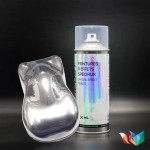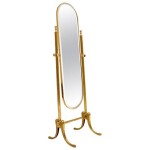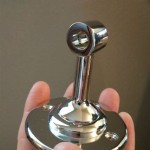How To Tile Frame A Mirror
Framing a mirror with tile elevates its appearance, transforming a simple looking glass into a striking design element. This project is achievable for even novice DIY enthusiasts with careful planning and execution. The following guide outlines the necessary steps to successfully tile frame a mirror.
Preparing the Mirror and Surface
Before beginning the tiling process, ensure the mirror is clean and free of any dust or debris. Thoroughly clean the mirror's surface with glass cleaner and a lint-free cloth. Protect the mirror's reflective surface with masking tape, extending the tape slightly onto the area to be tiled. This safeguards the mirror from adhesive and grout. The surface the mirror is mounted on must also be clean, dry, and level. If tiling directly onto a wall, ensure the wall is properly prepared and primed for adhesion.
Selecting the Right Materials
Choosing appropriate materials is crucial for a successful outcome. Select tiles suited for the project, considering factors such as size, shape, and material. Smaller tiles offer greater flexibility around curves, while larger tiles provide a more streamlined look. Ceramic and porcelain tiles are popular choices due to their durability and water resistance. Ensure the chosen adhesive and grout are compatible with both the tile and the mirror's backing material. Pre-mixed adhesive simplifies the process, while dry-set mortar offers greater control over consistency. Unsanded grout is recommended for narrow grout lines, typically less than 1/8 inch, while sanded grout is suitable for wider joints.
Planning the Tile Layout
Careful planning of the tile layout prevents unexpected issues during installation. Dry-fitting the tiles around the mirror allows for visualizing the final arrangement and making any necessary adjustments. This step also helps determine the required number of tiles and identify any potential cutting requirements. Consider incorporating decorative elements, such as border tiles or accent pieces, during the planning phase. Accurate measurements are essential to minimize waste and ensure a symmetrical design.
Cutting and Shaping Tiles
Many tile projects require cutting tiles to fit specific dimensions or create intricate designs. A tile cutter or wet saw provides clean, precise cuts. Score the tile with the cutter or saw along the desired cutting line, then apply firm pressure to snap the tile along the score. For curved cuts or intricate shapes, a tile nipper is useful. Practice on spare tiles before cutting the tiles intended for installation to ensure accuracy and minimize material waste. Always wear safety glasses when cutting tile to protect eyes from flying fragments.
Applying Adhesive and Setting Tiles
Applying the adhesive correctly ensures proper tile adhesion. Using a notched trowel, spread a thin, even layer of adhesive onto the surface where the tiles will be placed, covering an area slightly larger than the tile itself. The notches in the trowel create ridges in the adhesive, which promote even coverage and allow for air to escape. Firmly press each tile onto the adhesive, ensuring full contact. Use spacers between tiles to maintain consistent grout lines. Periodically remove a set tile to check for complete adhesive coverage on the back. Adjust adhesive application if necessary.
Grouting and Cleaning
Once the adhesive has cured according to the manufacturer's instructions, remove the tile spacers. Mix the grout according to the package directions, achieving a smooth, paste-like consistency. Apply the grout using a grout float, pressing it firmly into the spaces between the tiles to ensure complete filling. Remove excess grout from the tile surface with a damp sponge, working diagonally across the tiles to avoid dislodging them. Allow the grout to haze over slightly before buffing the tiles with a clean, dry cloth. After the grout has fully cured, apply a grout sealer to protect it from staining and moisture.
Finishing Touches and Maintenance
After the grout has cured and been sealed, remove the masking tape from the mirror surface. Inspect the finished frame for any imperfections or missing grout. Clean the tiled surface with a mild tile cleaner to remove any remaining residue. Regular cleaning with a damp cloth and mild detergent will maintain the appearance of the tiled mirror frame. Avoid using abrasive cleaners, which can scratch the tile surface. Reapply grout sealer periodically, following the manufacturer’s instructions, to maintain its protective qualities.

How To Make A Custom Tiled Mirror The Stonybrook House

How To Decorate A Mirror With Tile Sand And Sisal

How To Mosaic Tile A Mirror Caffeine And Cabernet

How To Make A Custom Tiled Mirror Bathroom Mirrors Diy Tile Frame

How To Mosaic Tile A Mirror Caffeine And Cabernet

How To Decorate A Mirror With Tile Sand And Sisal

How To Make A Custom Tiled Mirror The Stonybrook House

No Grout Mosaic Tile Mirror The Diy Village

How To Frame A Bathroom Mirror With Mosaic Tile Hometalk

How To Frame A Mirror With Tile








